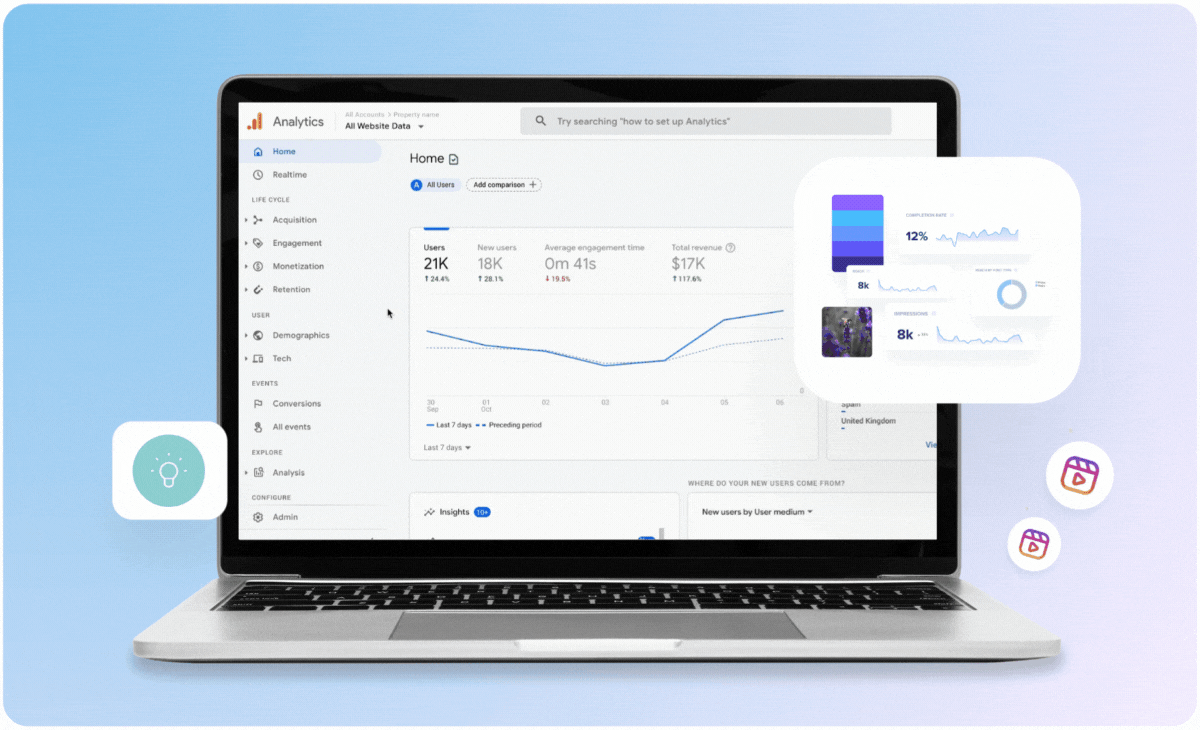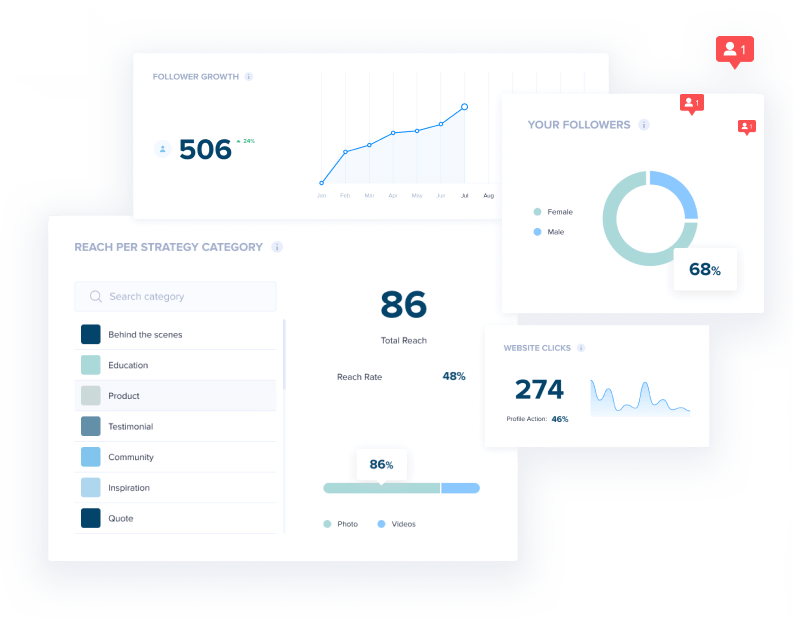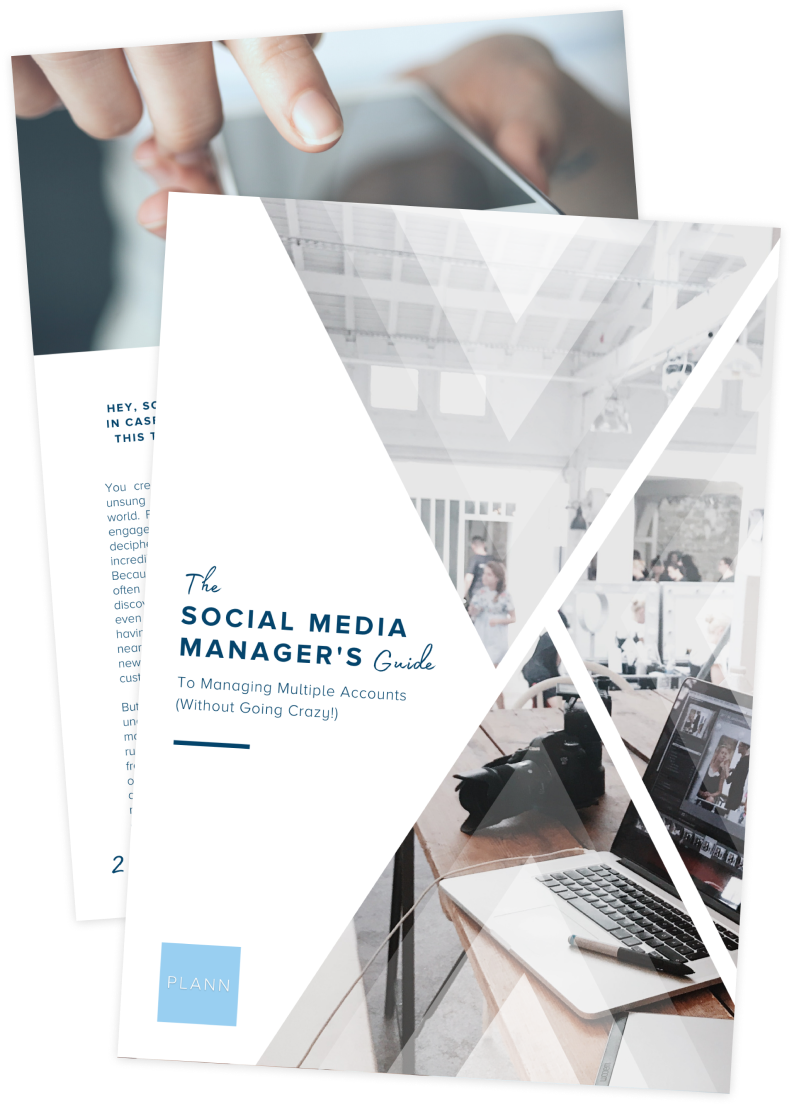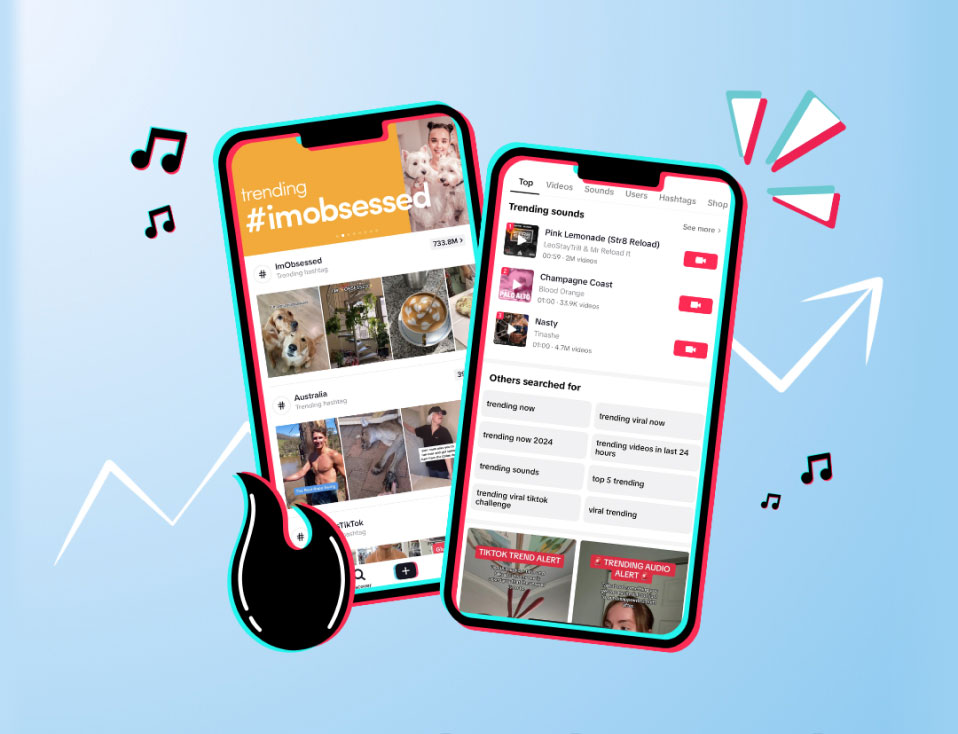Are you running ads or paid campaigns on social media? If you’re investing your hard-earned money into social advertising, you want to ensure you’re getting the best bang for your buck.
That’s why measuring your social media return on investment (ROI) is an essential part of your marketing strategy, allowing you to understand whether your campaigns and ad dollars are paying off.
By knowing exactly what metrics you should be tracking and the ROI of your past campaigns, you can make informed decisions about how to set your business up for success with social advertising.
Ready to improve your ad performance and drive tangible results for your brand? Here’s everything you need to know about tracking social media ROI.
What is social media ROI?
Social media return on investment (ROI) measures the value you’re getting from your social media advertising, paid campaigns and the resources you’re investing in social media marketing.
Ideally, you want to ensure that every dollar you’re spending on advertising is delivering a tangible impact for your business (whether that’s driving sales, boosting enquiries or increasing app downloads).
By tracking social media ROI, you can pinpoint which platforms, campaigns and even types of ad creative are helping you to reach your ideal audience and drive meaningful results for your business.
Over time, you can use these results to inform and improve the performance of your future campaigns, too.
How to measure social media ROI
The best way to measure success and ROI on social media is to think about the primary goal of your ad campaign.
Chances are, your campaign’s objective will fall into one of these categories:
• Boosting brand awareness
• Increasing engagement
• Driving sales or conversions
Each of these objectives has a specific action attached. That could be following your brand’s account, leaving a comment on your latest post or even visiting your e-commerce site to make a purchase.
There’s no single way to measure social media ROI. Instead, it’s about pinpointing the objective of your campaign and deciding which goals and metrics will help you measure success.
The key here is to be specific about the goals you’re setting, such as:
• How many users do you want your campaign to reach?
• What number of website clicks do you want to receive?
• How many sales are you hoping to drive?
With your goals in mind, you can then calculate how much money you’re investing in your campaigns and whether this is translating into an uptick in followers, an increase in engagement or an influx of new orders.
To point you in the right direction, here are a few ways to measure social media ROI based on your campaign goals and objectives.
If you want to boost brand awareness
Awareness-stage campaigns are all about boosting your visibility on social media and building trust with new audiences who might be interested in the products or services you provide.
Some of the best awareness-stage metrics to track social media ROI include:
• Reach: the number of unique users who have viewed your ad or campaign.
• Impressions: the number of times your ad or campaign has been displayed on social media. Note one user can have multiple impressions, which is why this figure is usually higher than your reach.
• Follower growth rate: are you looking to drive audience growth through your social campaigns? By tracking the number of new users who follow your brand (and how your follower count increases over time), you can measure the ROI of your campaign.
If you want to increase engagement
Want to drive interactions from your social ads or campaigns? It’s important to be tracking engagement-focused metrics such as:
• Engagement rate: a measure of the number of reactions, comments, and shares your content receives in relation to your audience, usually shown as a percentage.
• Video completion rate: sharing a video ad to social media? Tracking the number of users who watched your video until the final second can show you how effective your video content is in resonating with your target audience.
If you want to drive sales or conversions
Want to drive traffic, downloads or sales from your social media ads? These metrics need to be on your radar when tracking the ROI of conversion-focused campaigns:
• Cost per click (CPC): how much are you paying to score one click on your social media ads? The lower your cost per click, the more effective your campaigns are in driving action from your audience on social media.
• Conversion rate: driving website traffic from your social ads is great, but you want to make sure at least a portion of these users is converting or making a sale. By dividing the number of conversions with the clicks on your ad, you can understand how effectively you’re turning users into paying customers.
The Best Social Media ROI Tools
Ready to measure the success of your social media campaigns? There are a bunch of handy tools and platforms to help you calculate and measure the ROI of your social media ads and campaigns.
1. Google Analytics
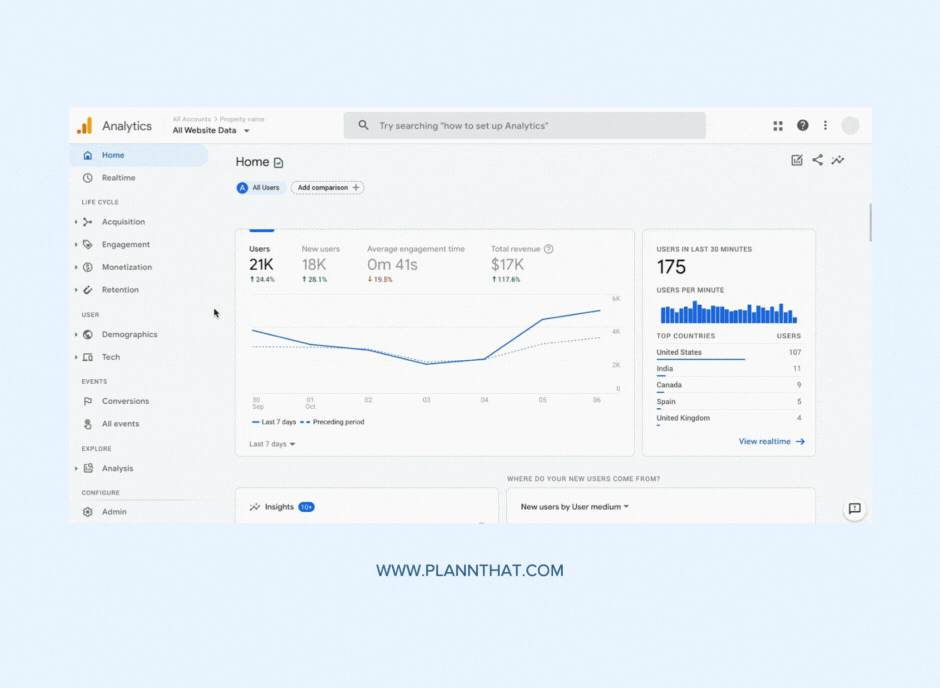
Google Analytics is Google’s free insights tool which is super helpful in understanding and tracking your website traffic and conversions.
By tracking the portion of site traffic that is coming from social media, Google Analytics can help you better understand the value of your social media efforts on your business’s bottom line.
Want to track the number of website visitors you’re scoring from social media? Head to Acquistion > Social > Network Referrals to track referral traffic.
Want to track conversions from social ads? Head to Conversions > Goals > Overview to track the performance of your conversion-focused campaigns.
2. Google Analytics UTM Link Builder
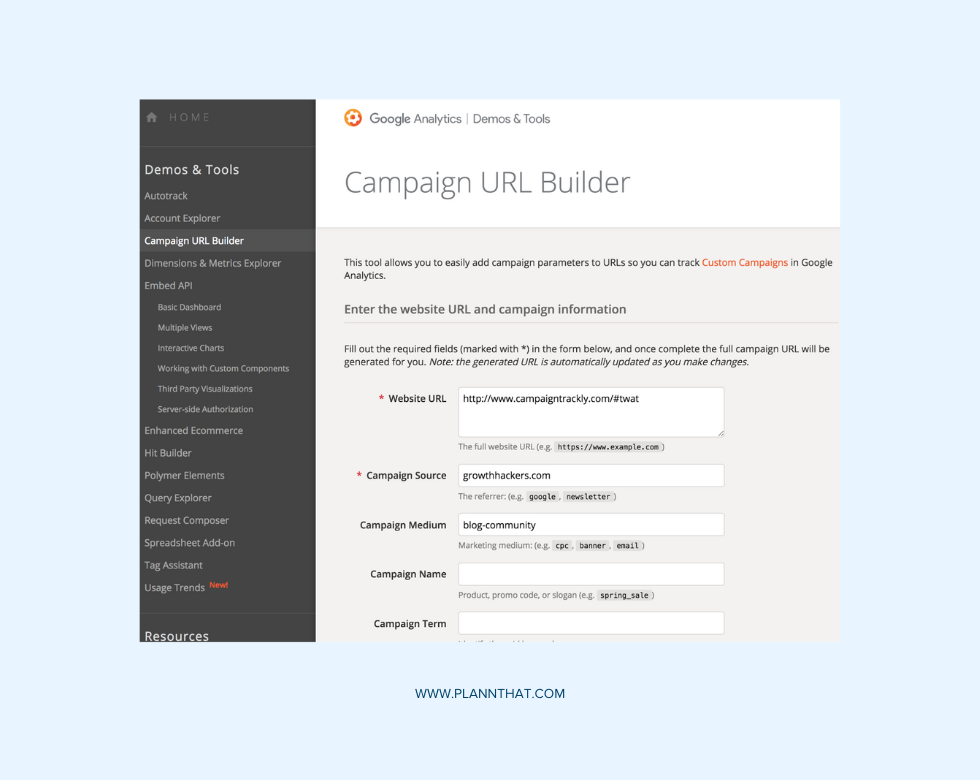
UTM parameters are short pieces of code you can add to the URLs you share on your social platforms to track and analyze data about website traffic and where website visitors are coming from.
There are a few key components used in UTM links, including:
• Campaign source: the social platform you’re using (e.g. Facebook, Instagram).
• Campaign medium: the type of content you’re using (e.g. a video ad or carousel).
• Campaign name: the name of the campaign you’re running (e.g. spring sale).
By using UTM parameters, you can get detailed insights into your campaign performance in Google Analytics and pinpoint which campaigns are most effective in driving traffic or conversions.
3. Social Media Platforms Native Analytics
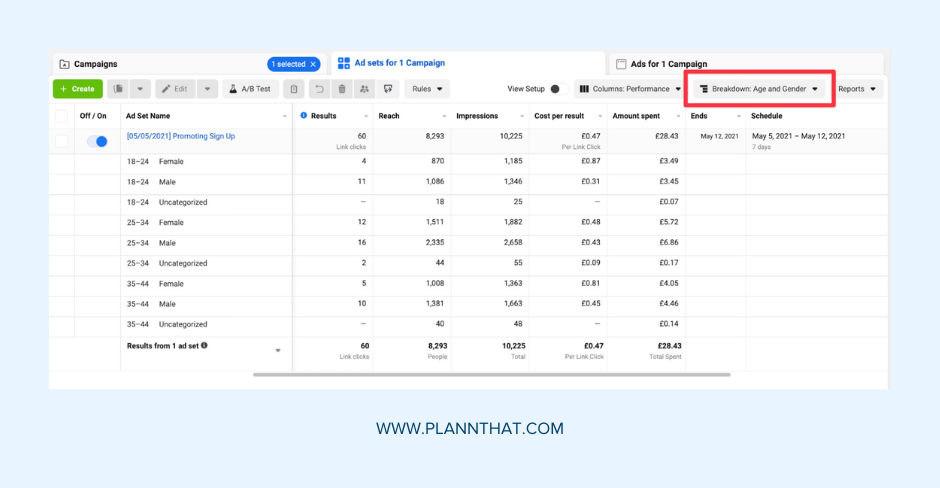
Each social media platform has its own set of unique analytics tools which you can use to track your social media ROI. Whether you’re diving into Instagram Insights, TikTok Analytics or the Meta Ads Manager, these native dashboards can help you quickly track the performance of your ad campaigns.
These tools are free to use which can be a great starting point to gather insights about your paid campaigns. The key is to set up your reports in a way that shows the metrics you want to track, whether that’s reach, impressions, website clicks or conversions.
4. Plann
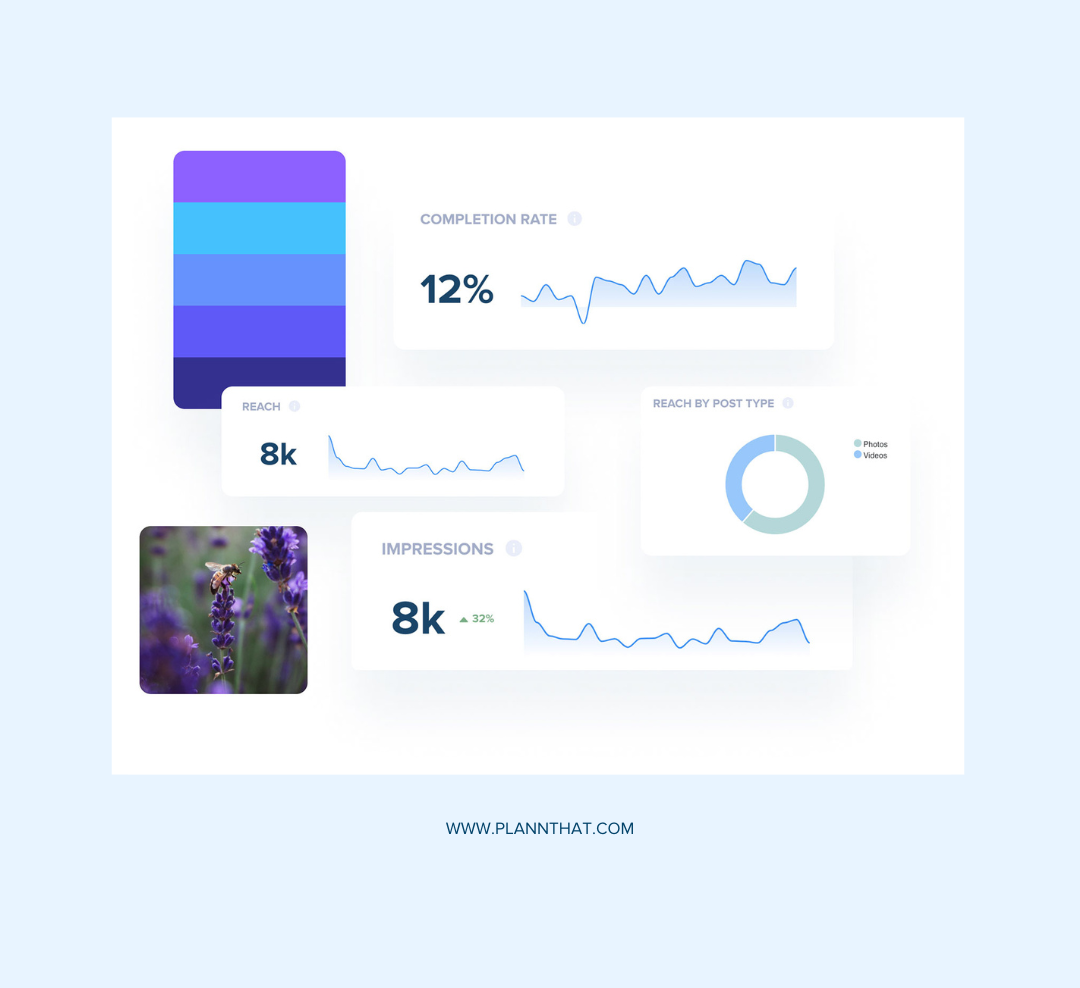
A handy all-in-one social media suite is invaluable when it comes to tracking your ROI. You’re likely across various different social media platforms and you probably need a single dashboard to track and analyze your marketing efforts.
Plann helps you easily track engagement rates for every post, whether it’s your organic social content or your paid ads. Whether you’re looking to track reach, engagement or web traffic, Plann’s advanced analytics dashboard helps you understand the true impact of your campaigns.
Three ways to increase social media ROI
Want to level up the performance of your next paid ads campaign? Here are three powerful ways to take your social media ROI to the next level:
• Test different audience segments: it’s important to test out different audience segments and compare the performance of your campaigns with different user groups. In one campaign you can target your core audience while another ad campaign can use custom audiences (those who have already interacted with your brand) or even lookalike audiences (audiences that are similar to your best customers but haven’t interacted with your brand).
• Experiment with different creative formats: if you’ve recently run a social ad campaign as a photo ad but haven’t had much luck, you might want to consider experimenting with short-form video content. This all really depends on what audience you’re trying to target and how they respond to your content but experimenting with dynamic content can help you improve your ROI.
• Use previous campaigns to inform future ads: simply calculating your ROI isn’t enough. You’ve also got to be proactive about what you learn in previous campaigns, whether the results were optimal or not. By using previous campaigns to inform future ones you can tailor your marketing strategies to meet the needs of your audience and find out what worked and what didn’t.
Ready to start measuring your success on social media?
Looking for an all-in-one content creation suite that allows you to manage your social media channels effortlessly and understand how your investments are paying off? From mapping out your strategy to reviewing your growth tactics and discovering what’s working for you in a single glance, you’ll find everything you need inside Plann.
Go on, and redeem your 7-day free trial of Plann Plus. If you don’t like it, keep using Plann for free!
